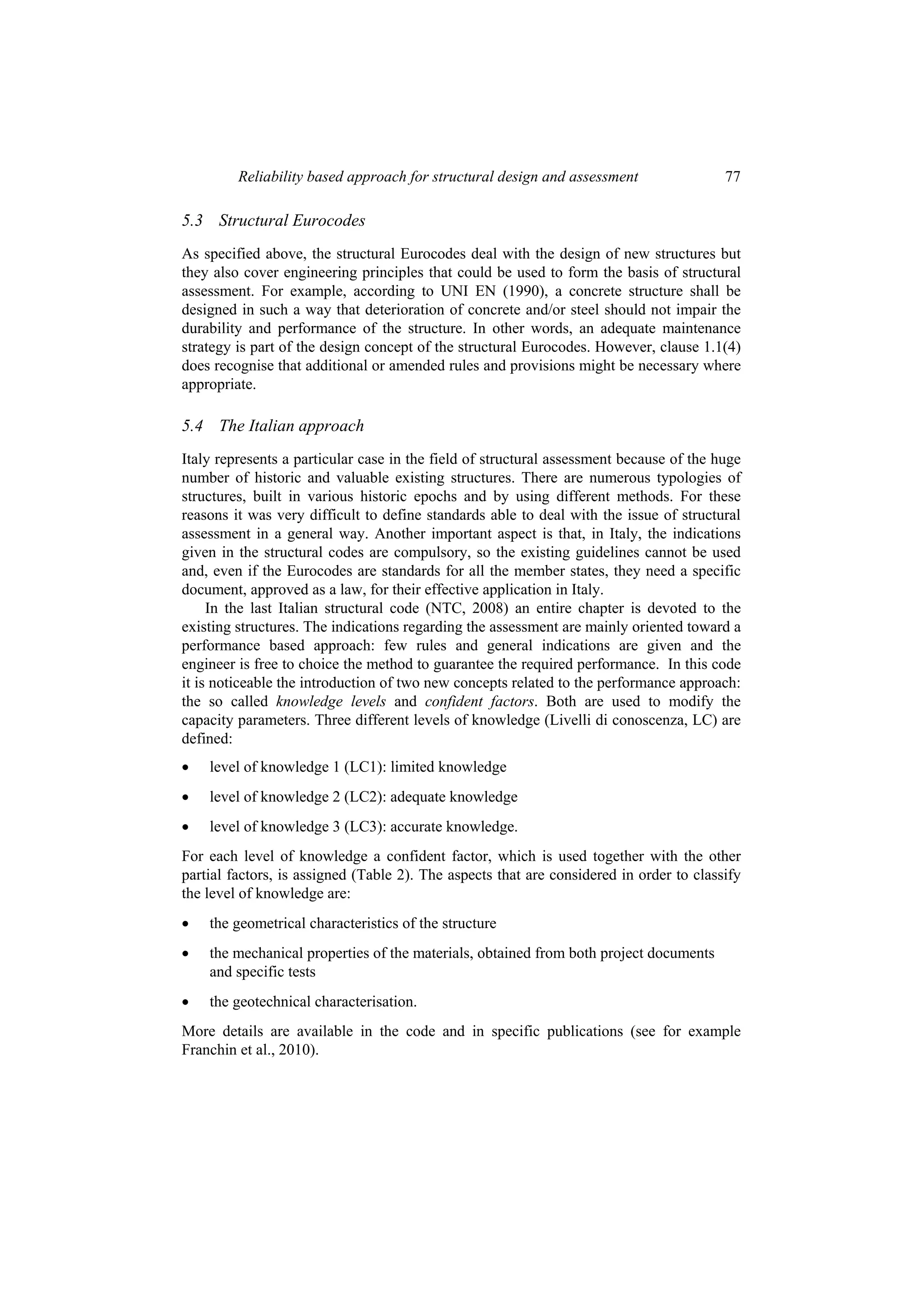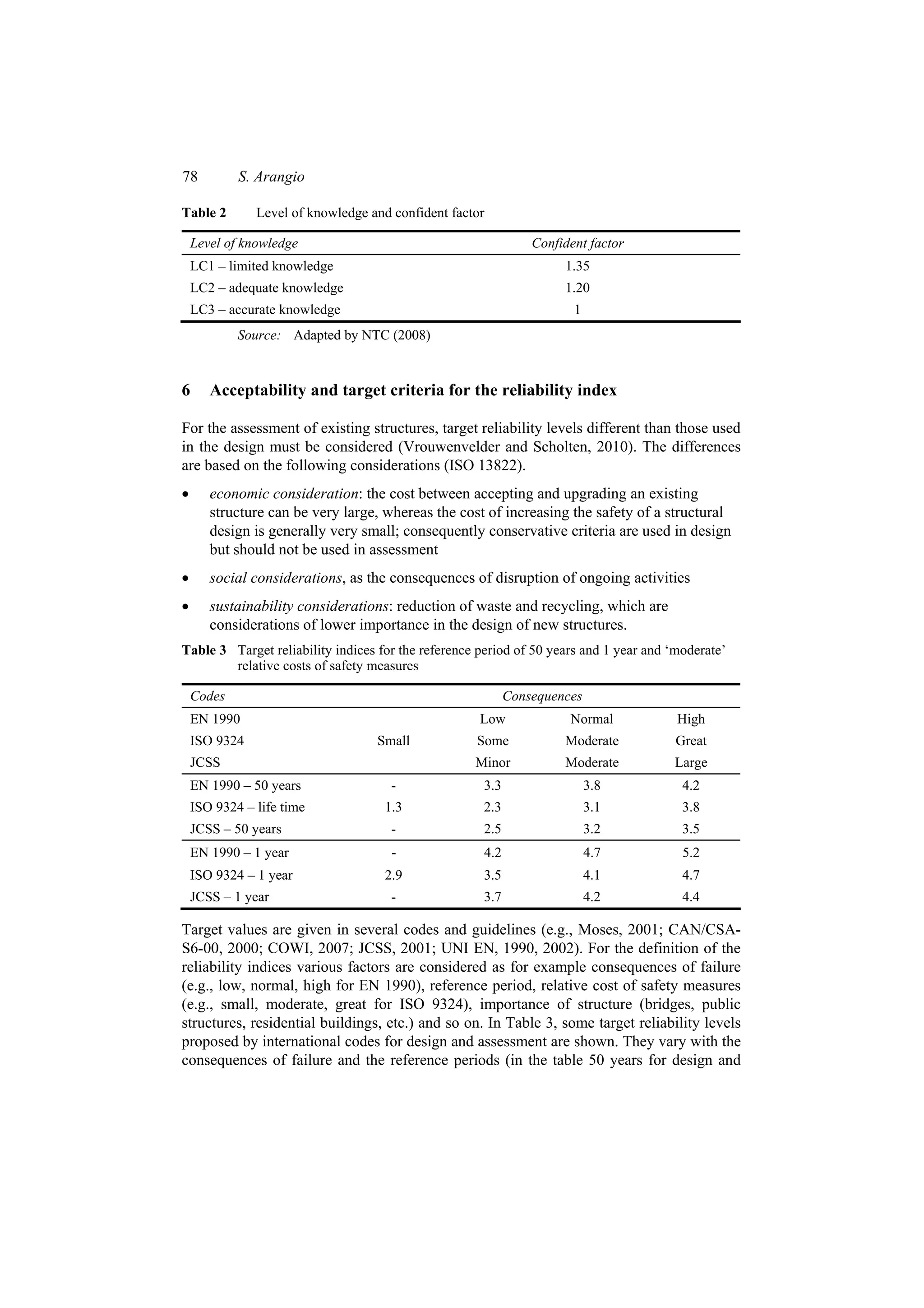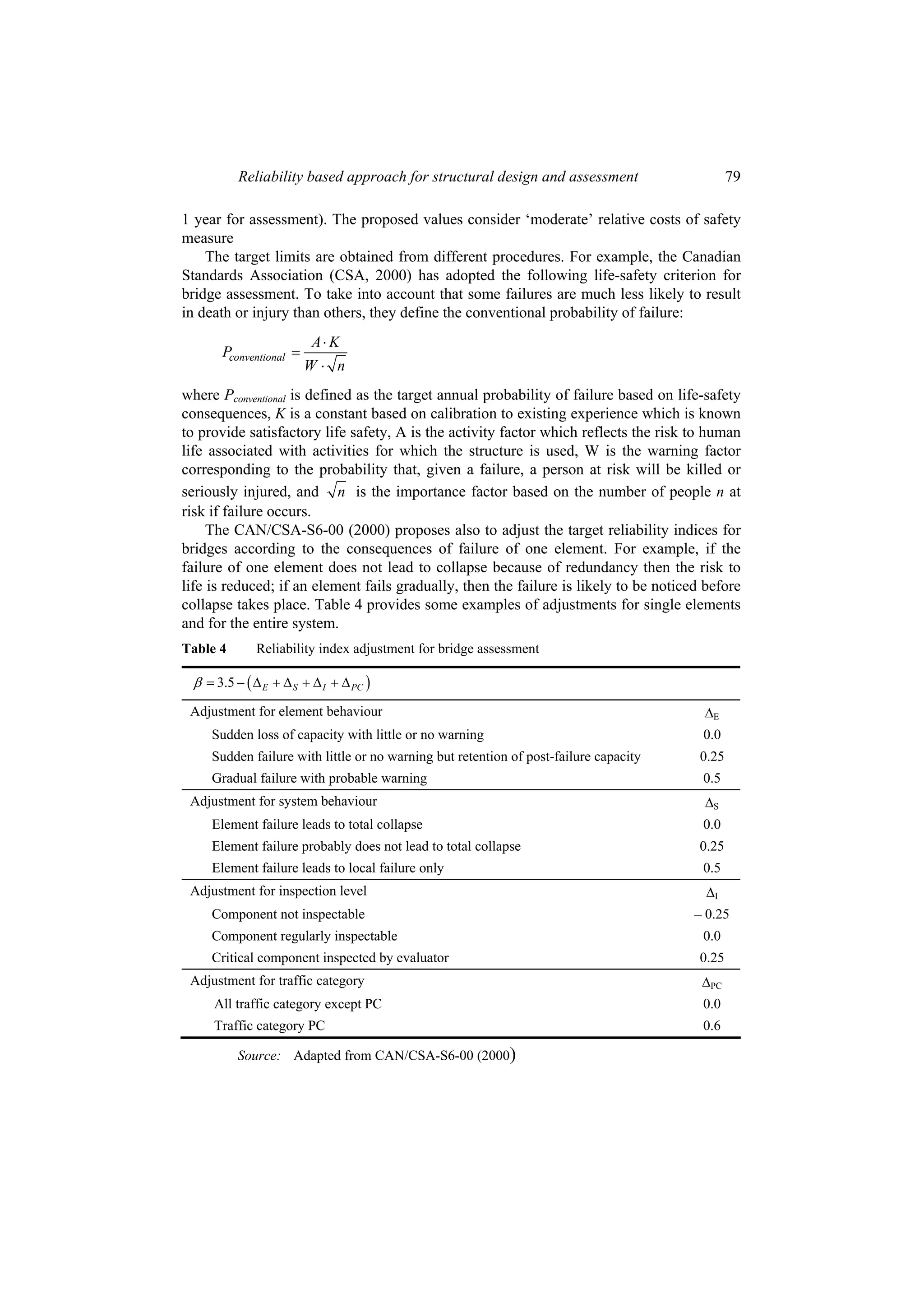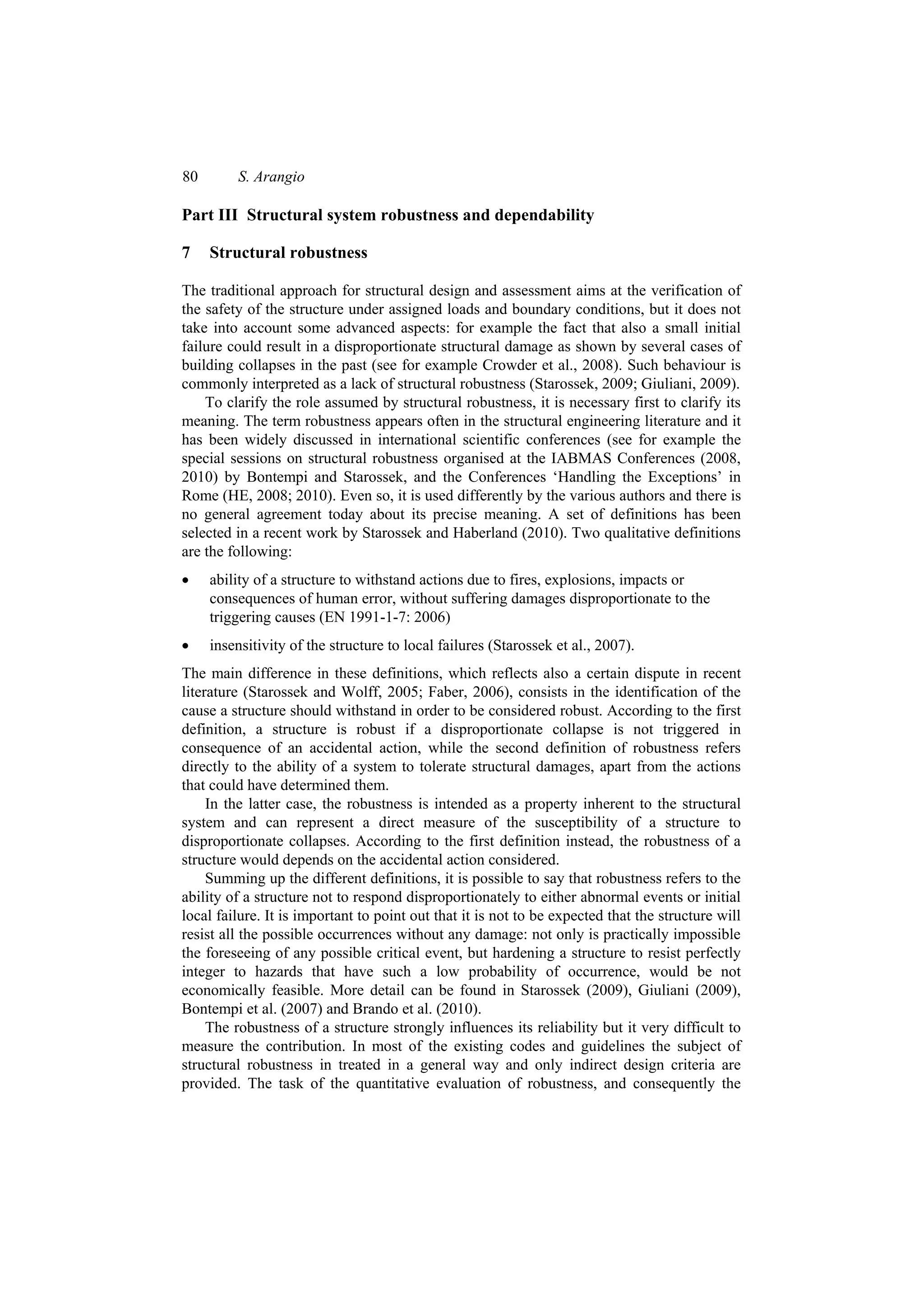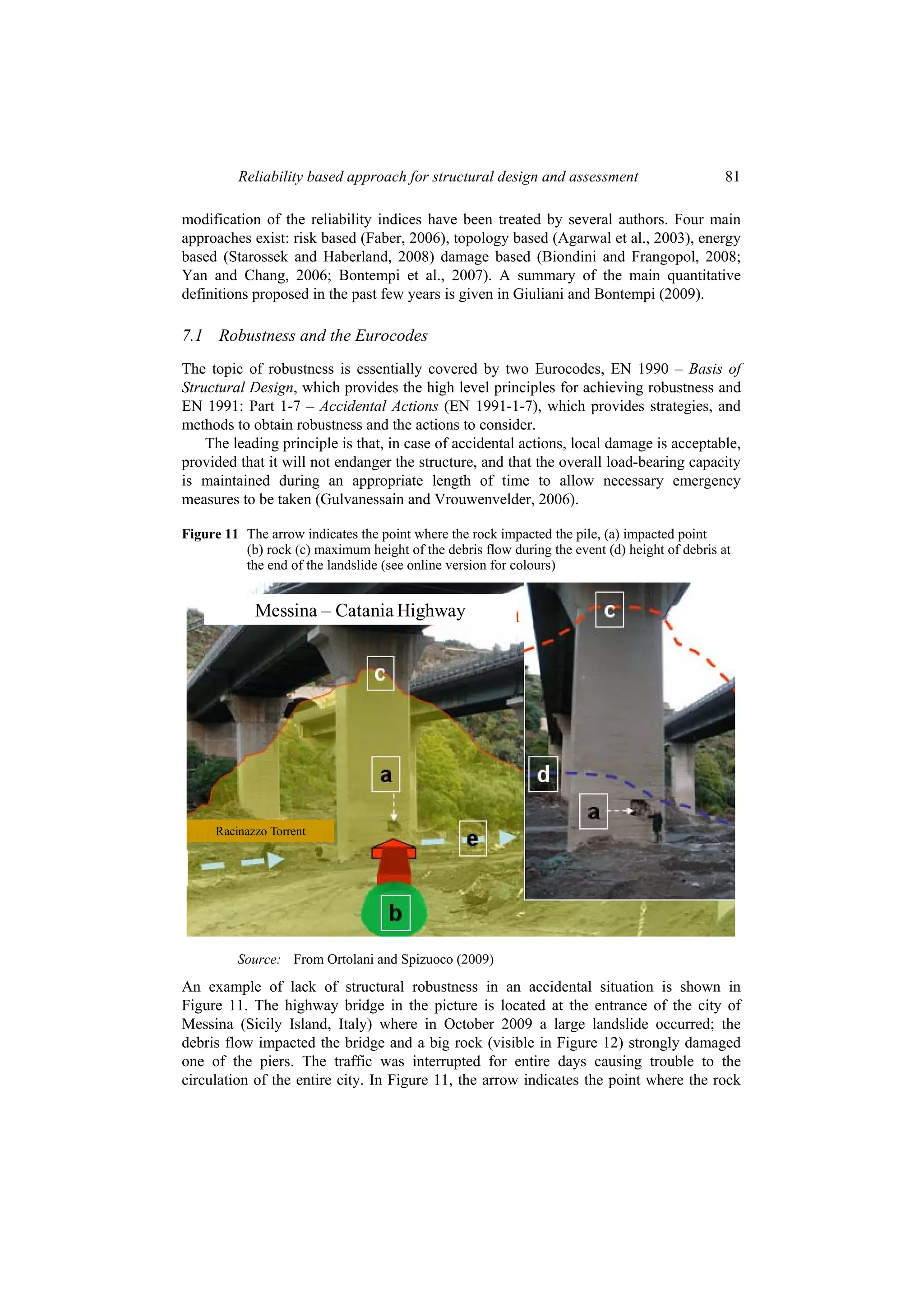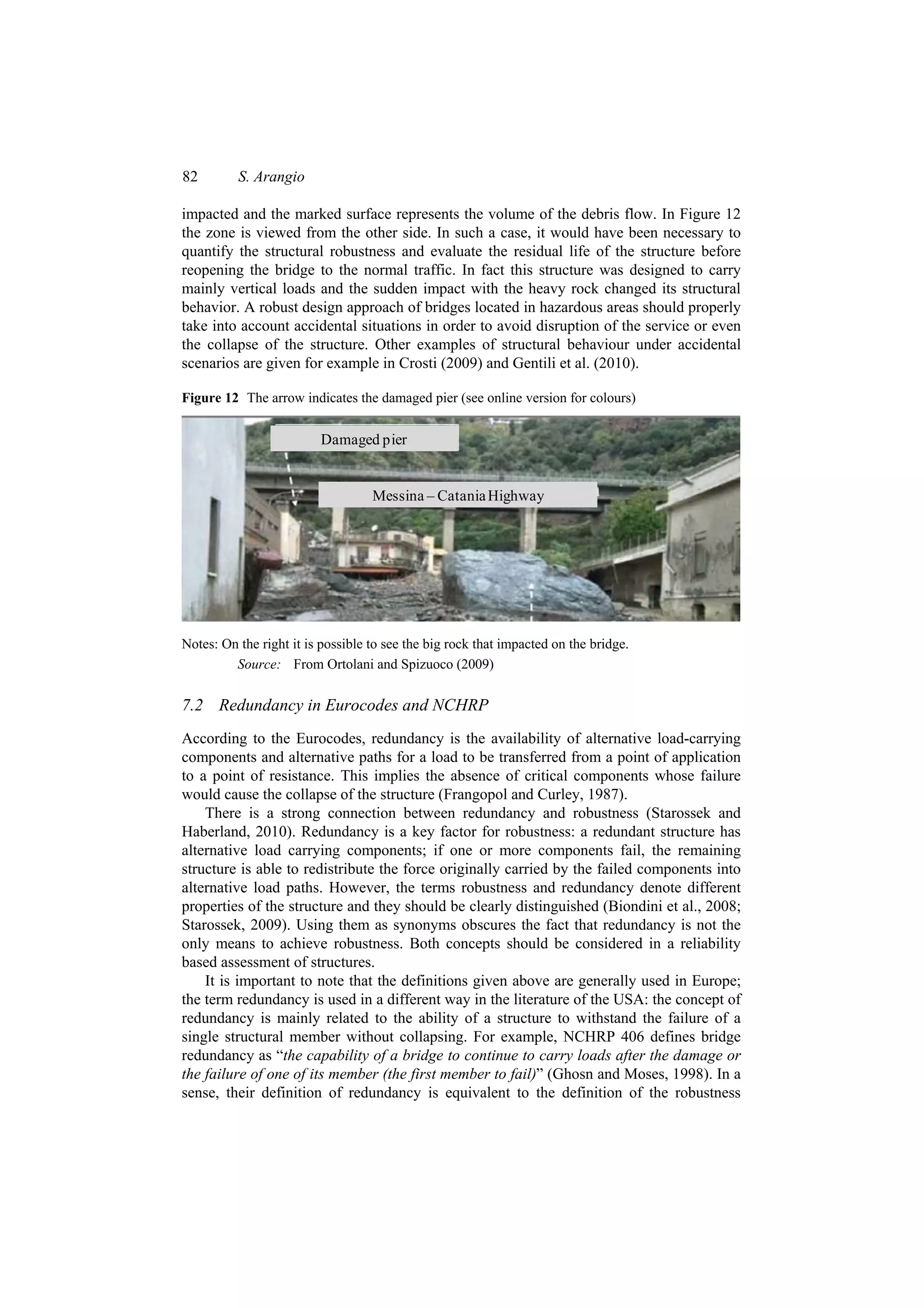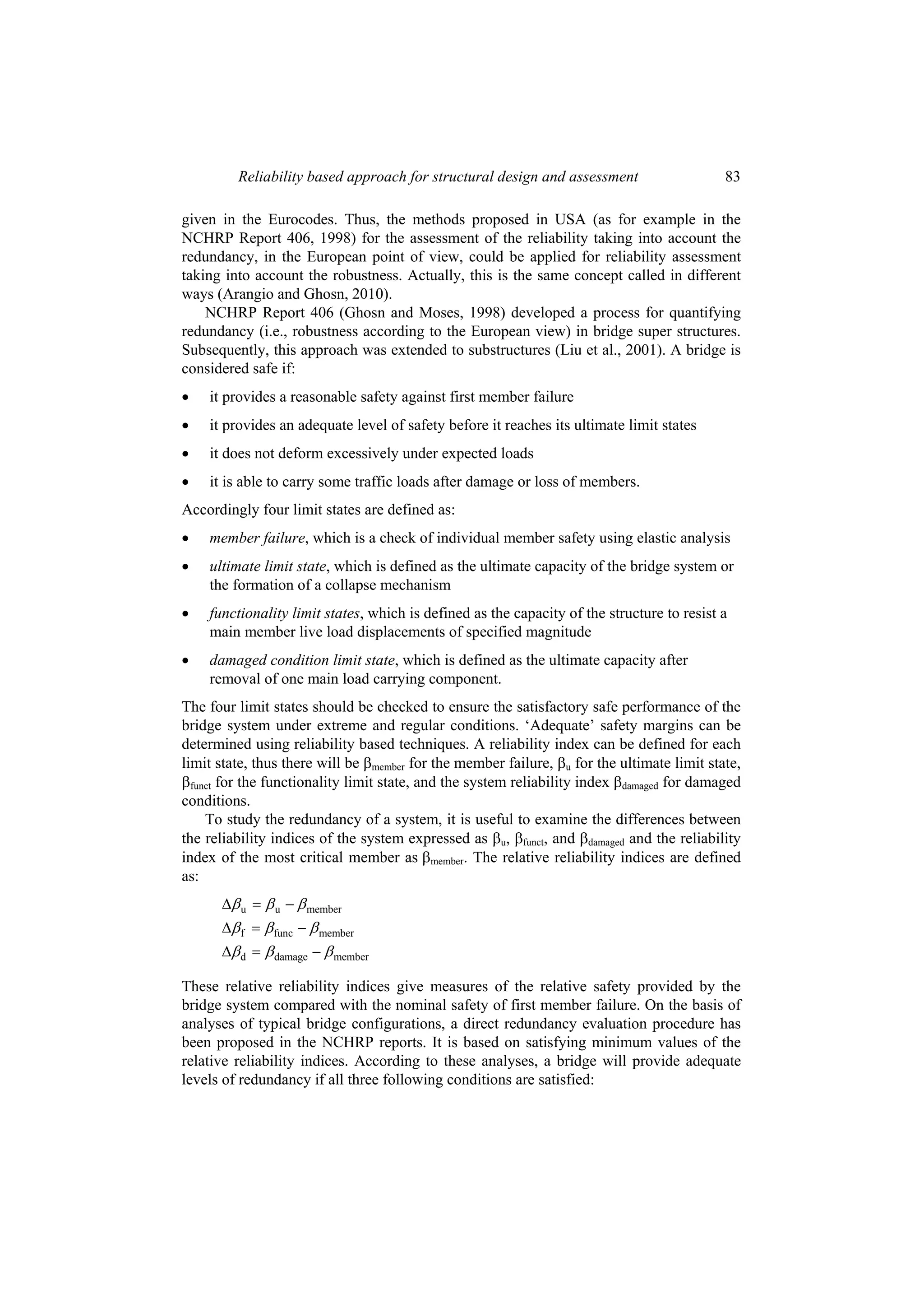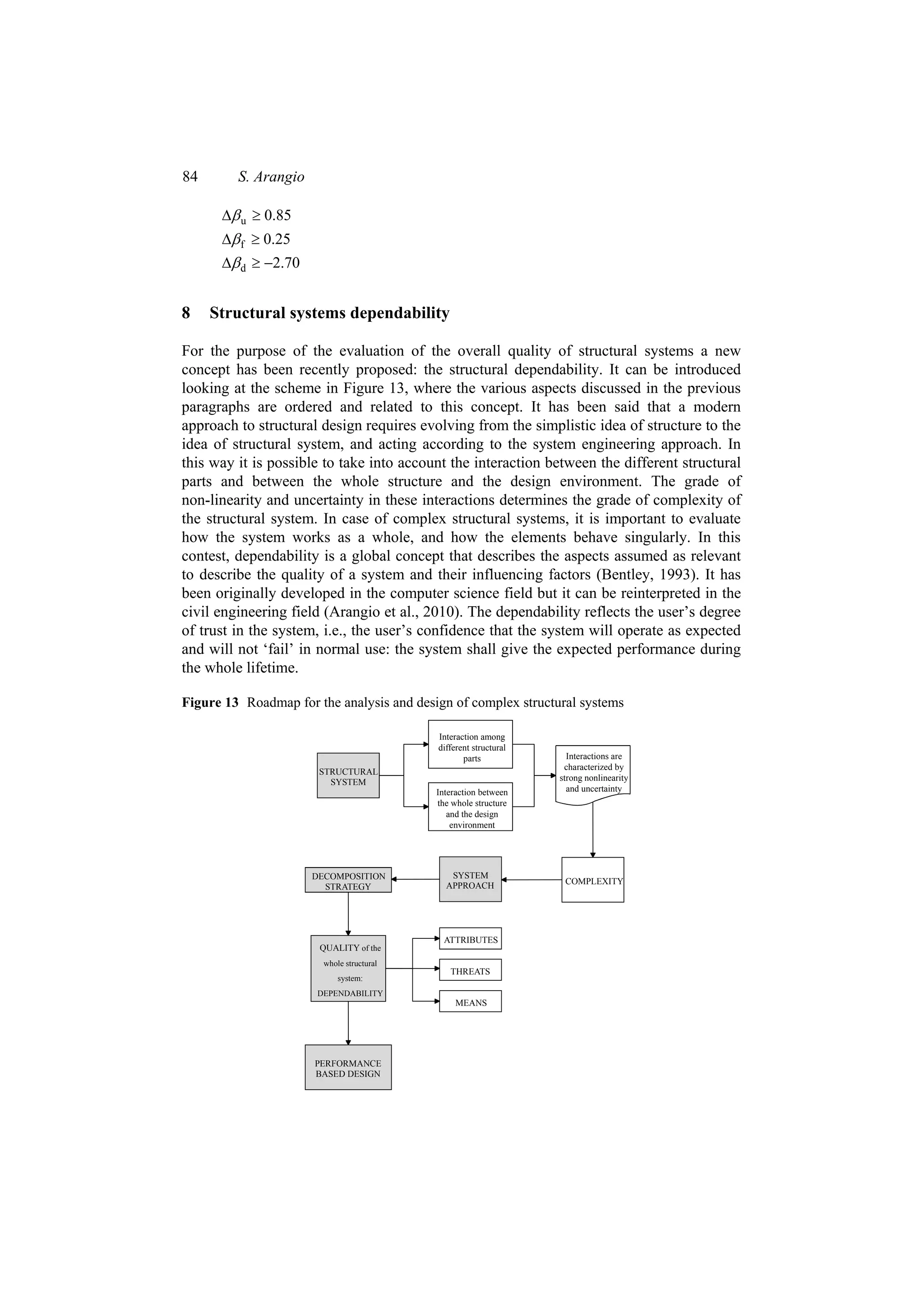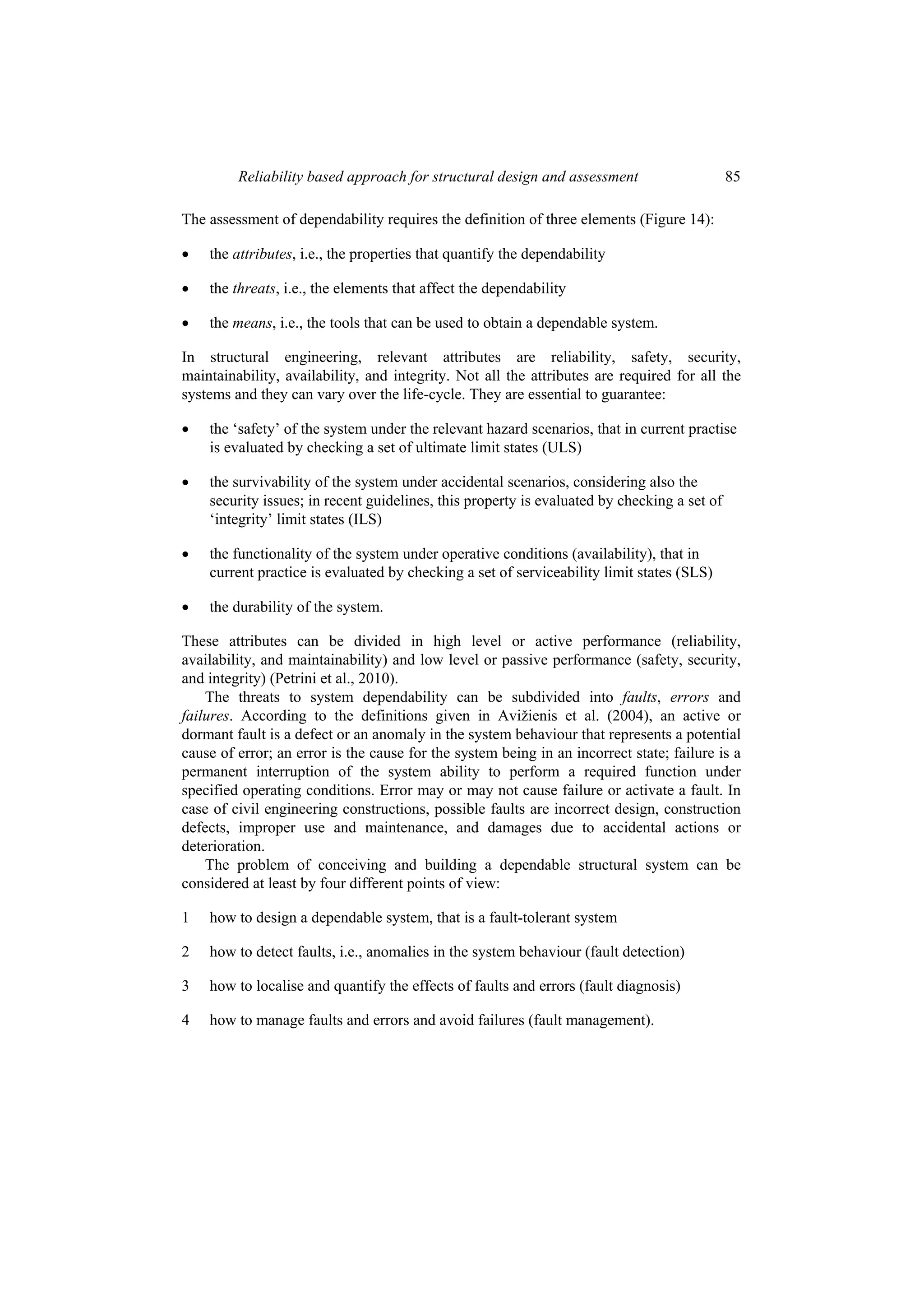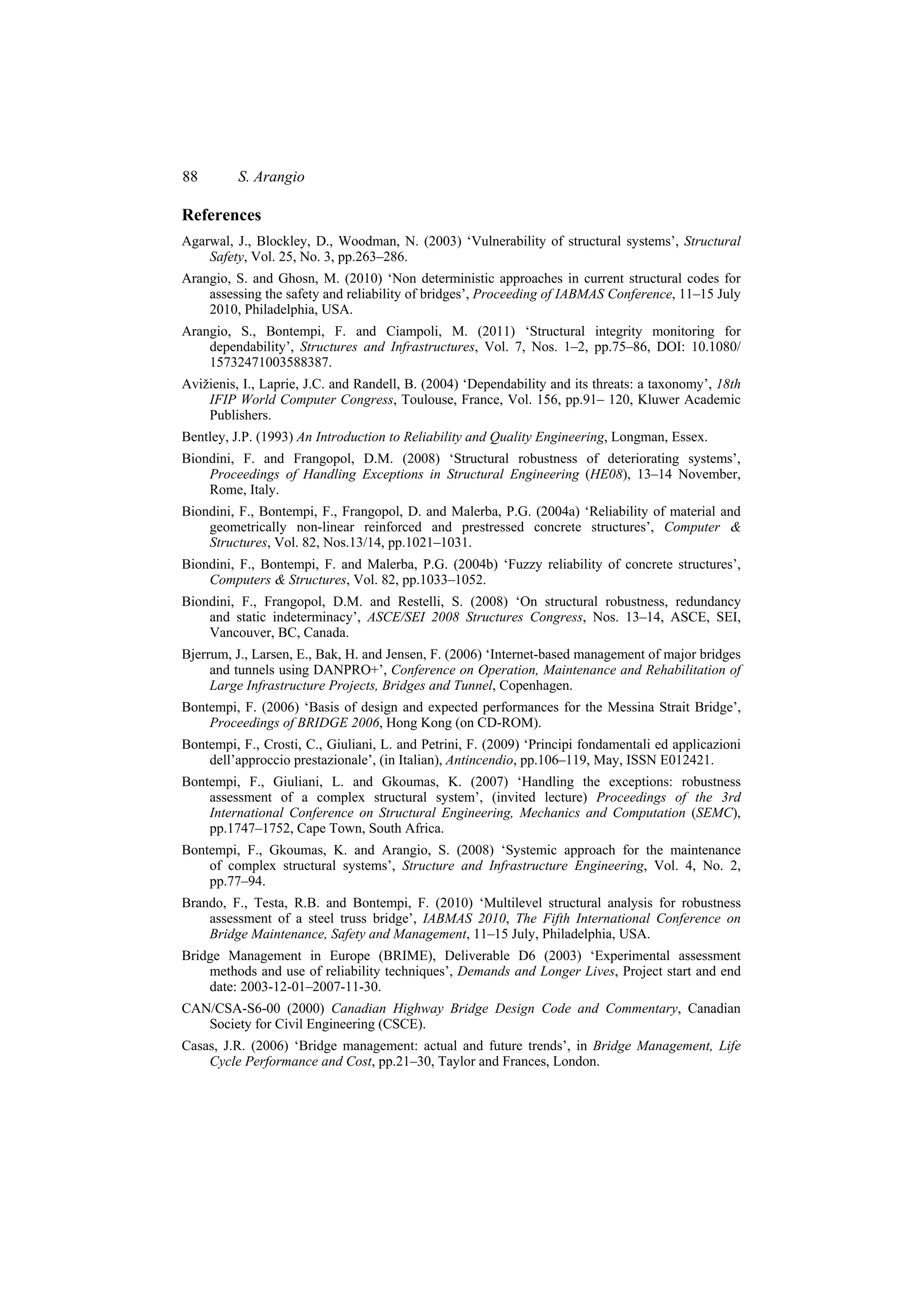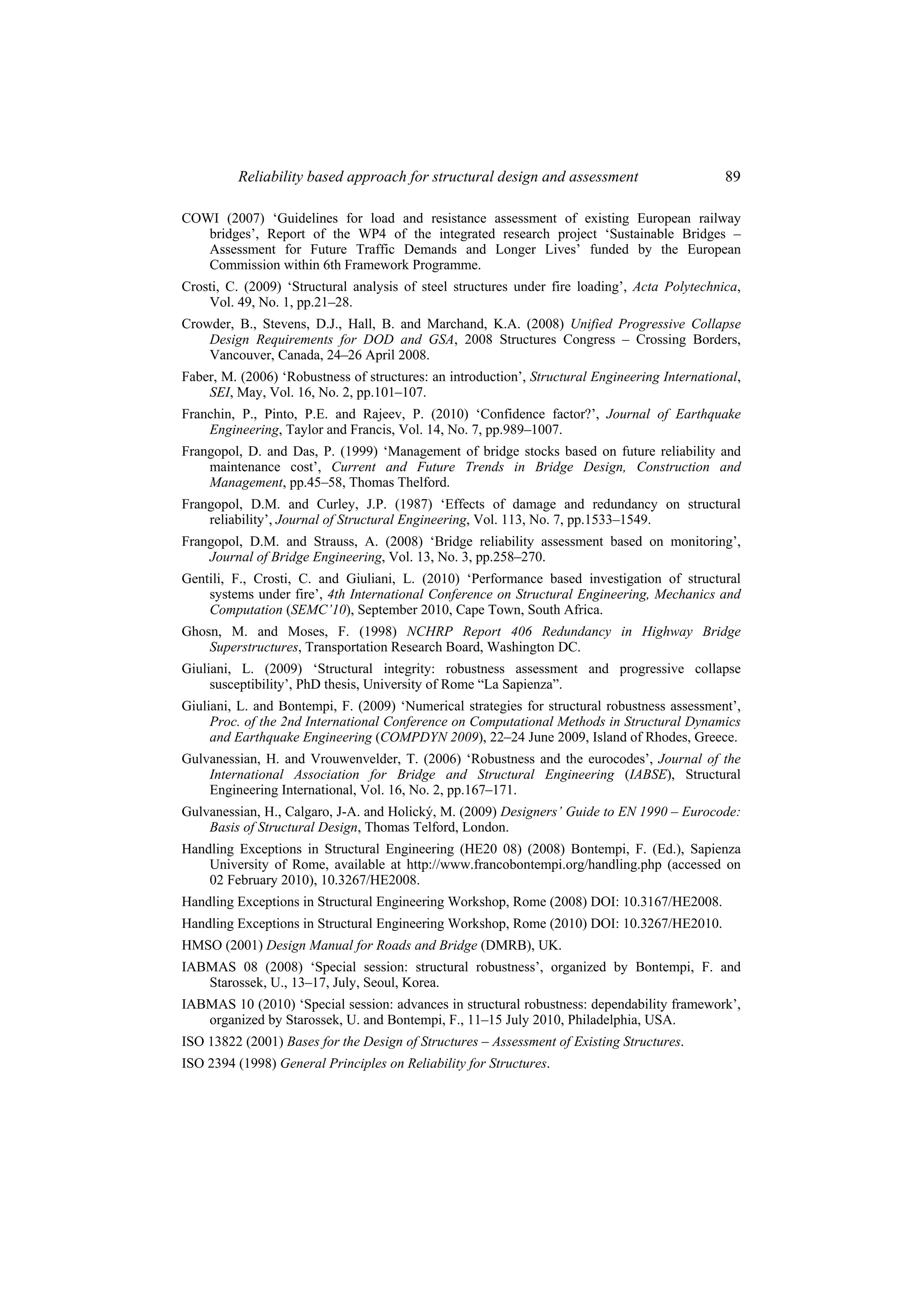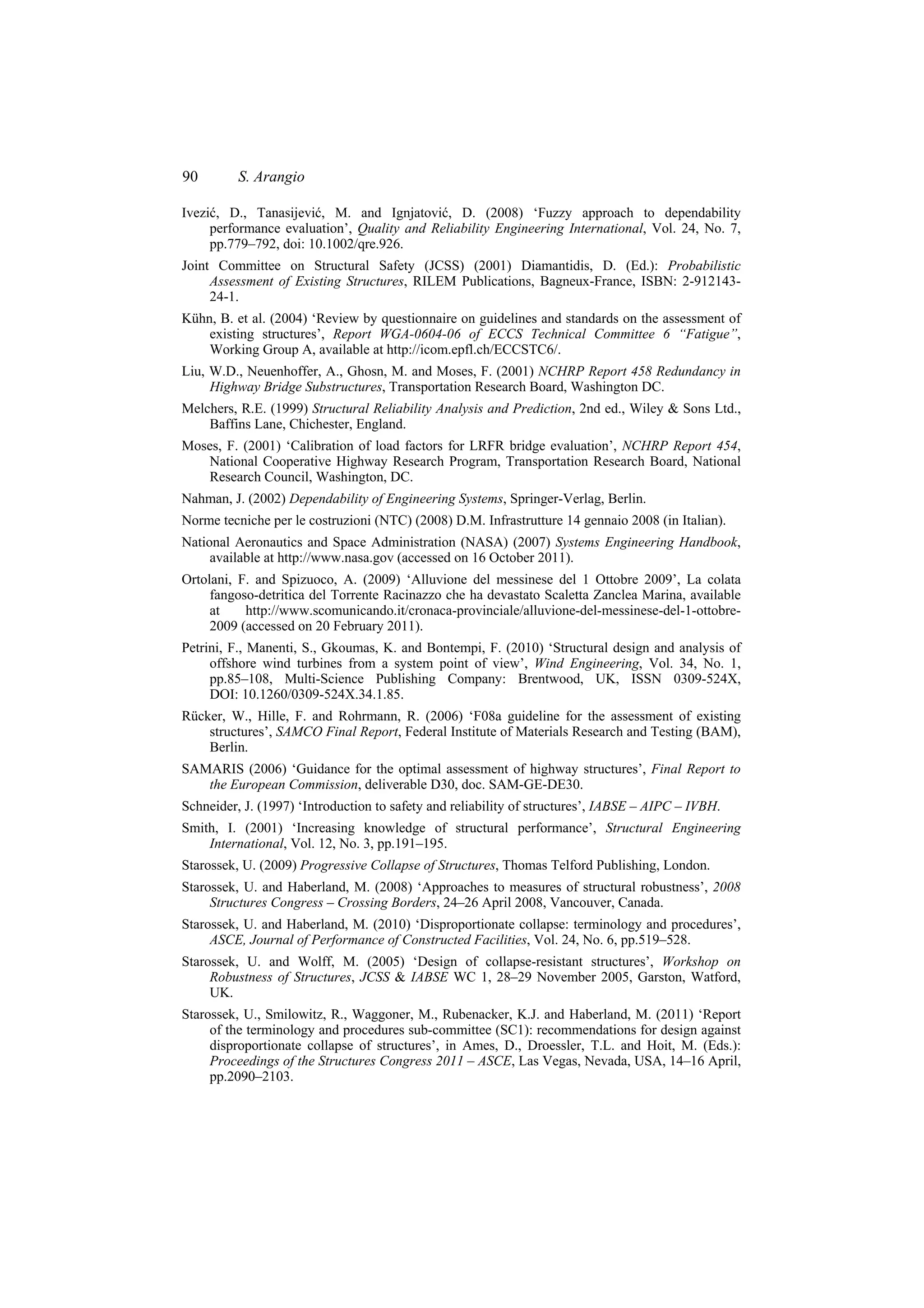This document discusses reliability-based approaches for structural design and assessment based on performance criteria and indicators in current European codes and guidelines. It is organized into three parts that discuss general aspects of structural design, performance indicators for assessing existing structures, and the concepts of robustness and dependability in structural systems. The document advocates for a system engineering approach to structural design that considers structures as complex systems and decomposes them into interconnected elements and components. Key concepts discussed include performance-based design, structural system quality management, and reliability-based design criteria.
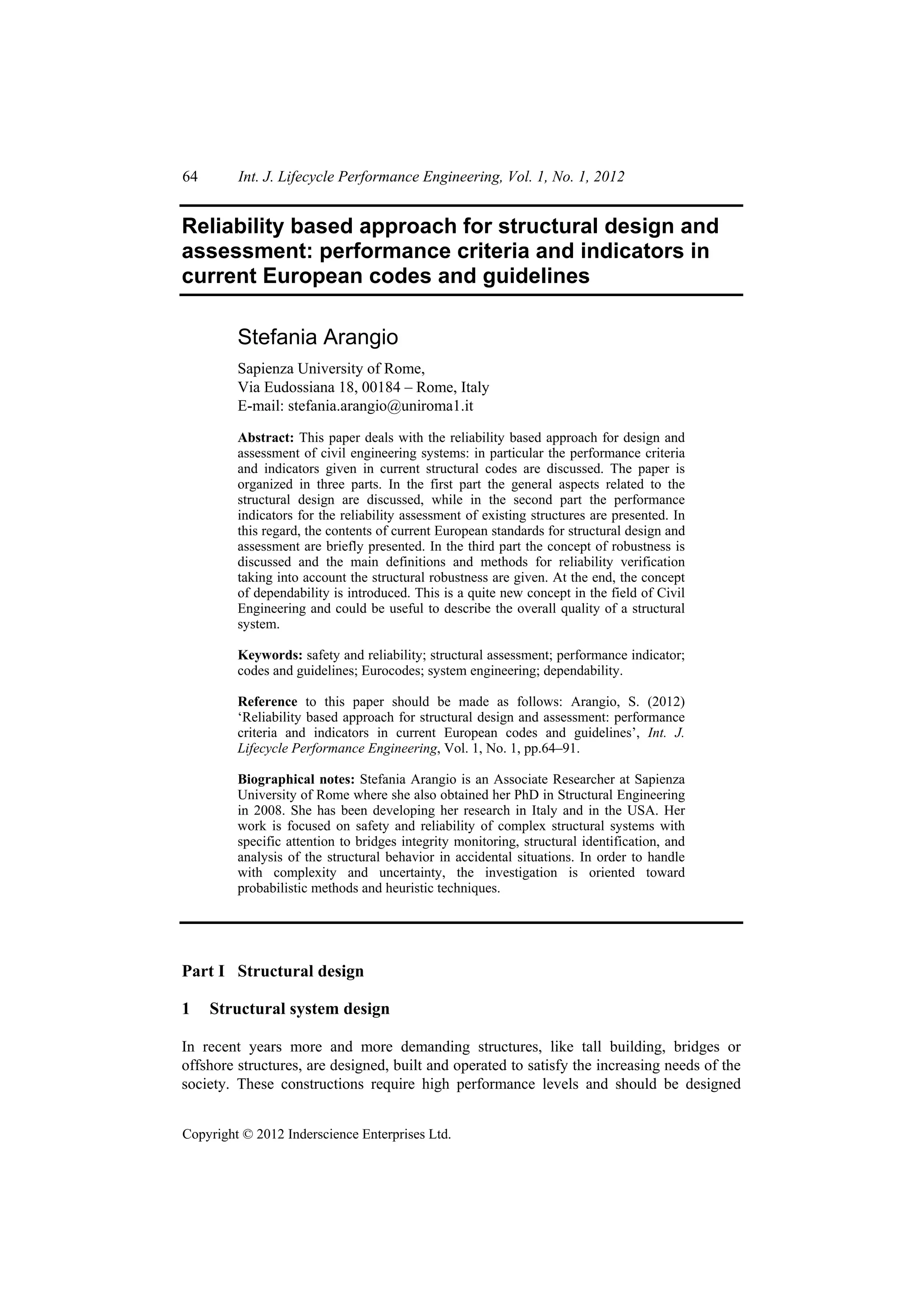
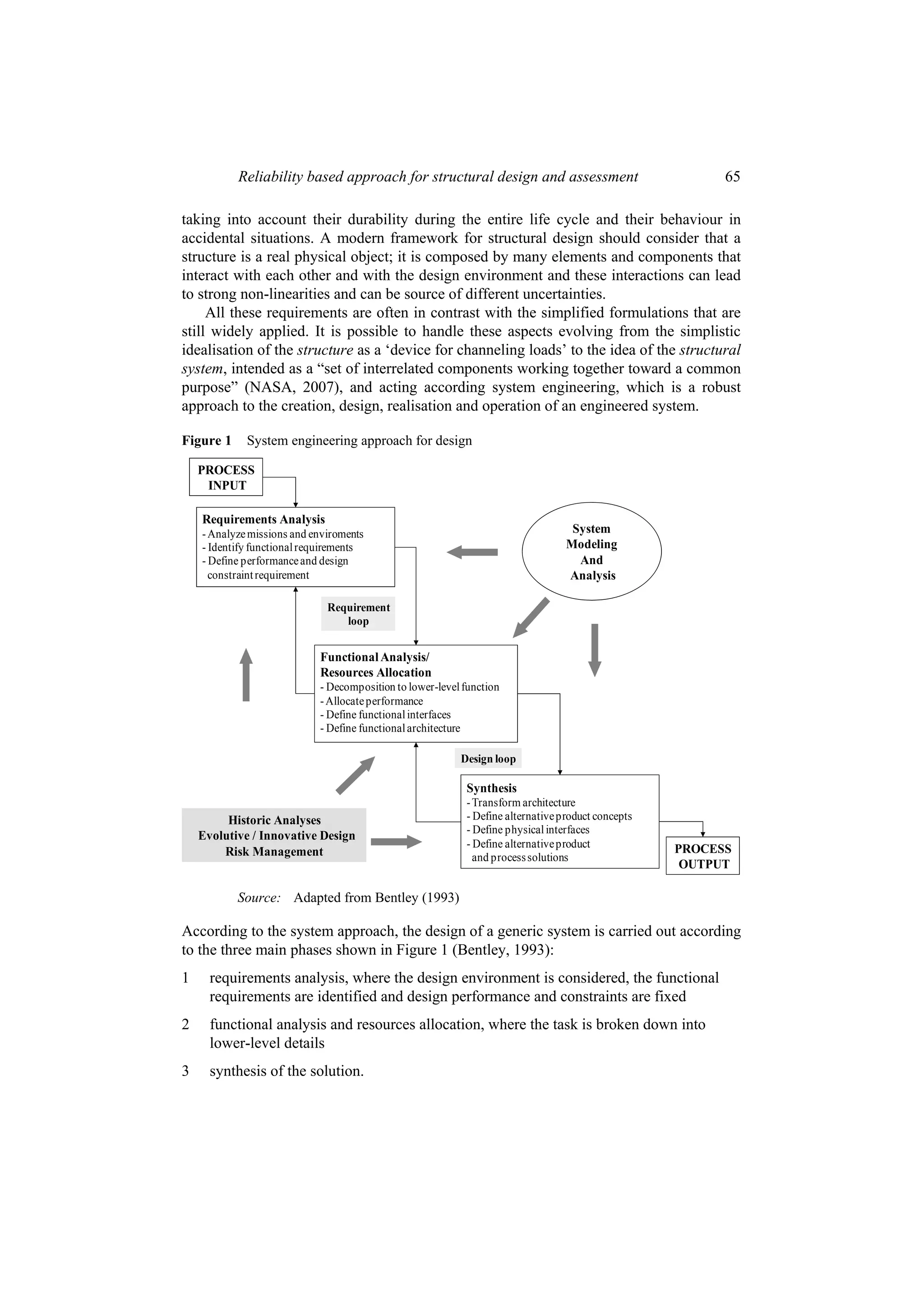
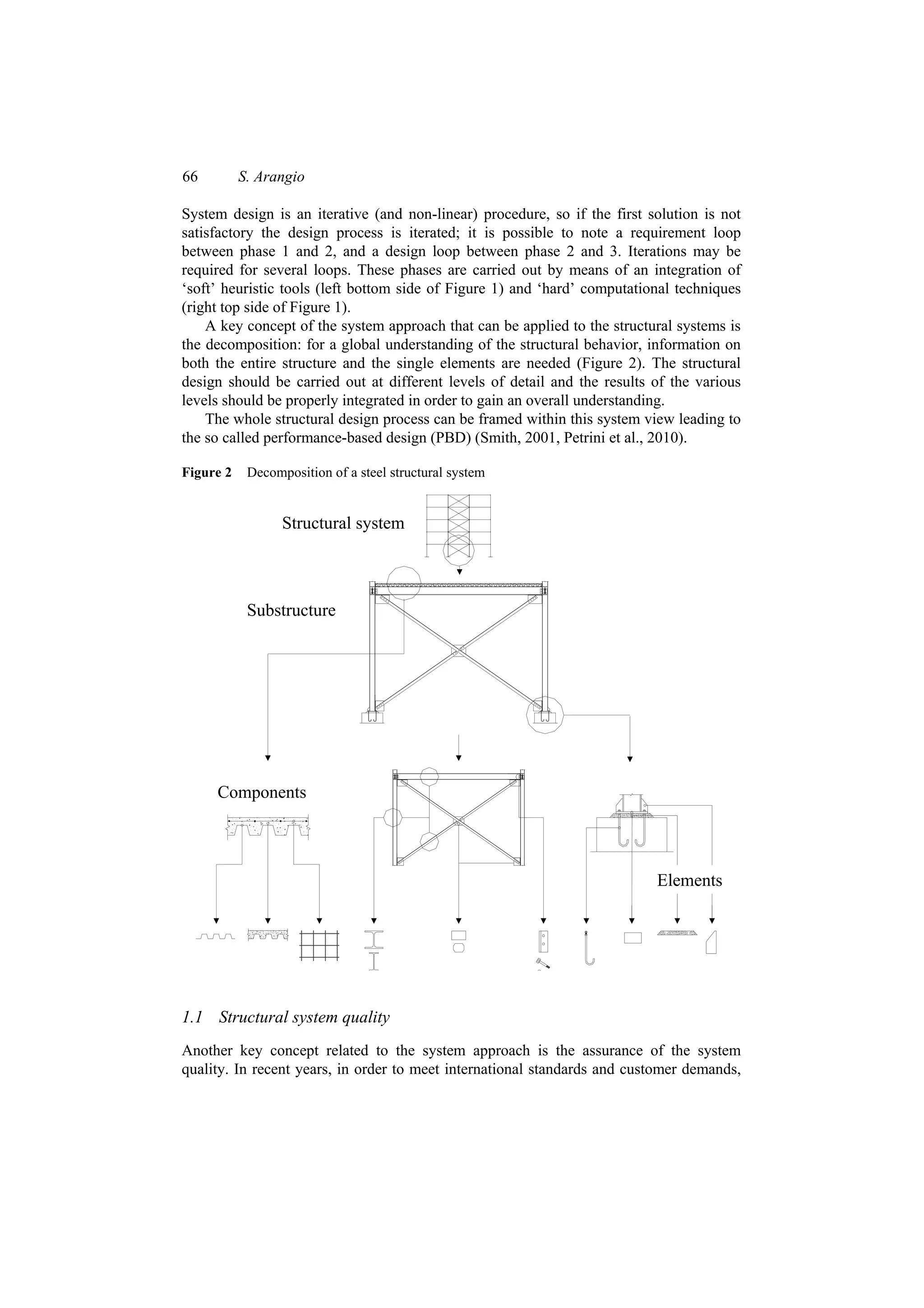

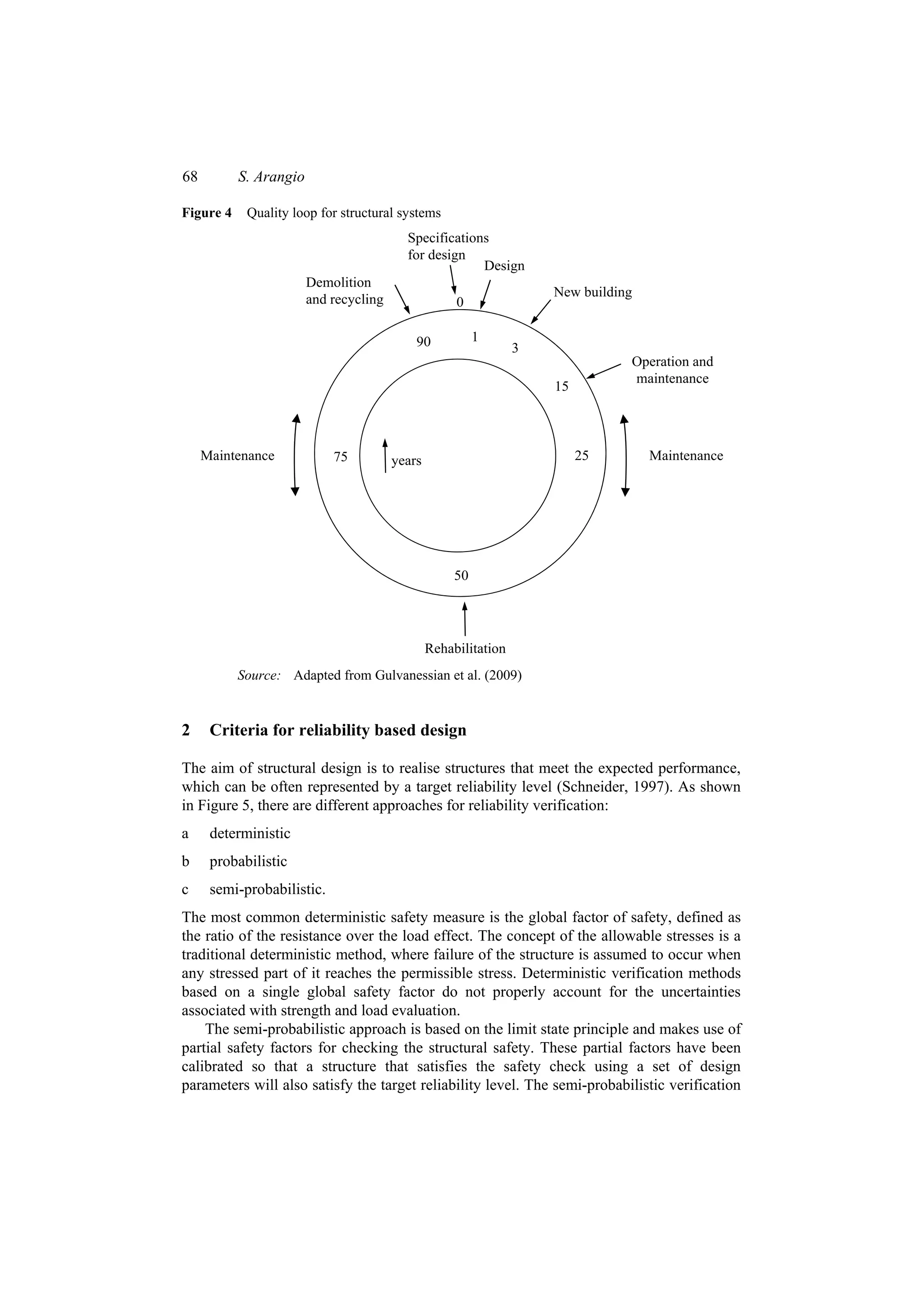
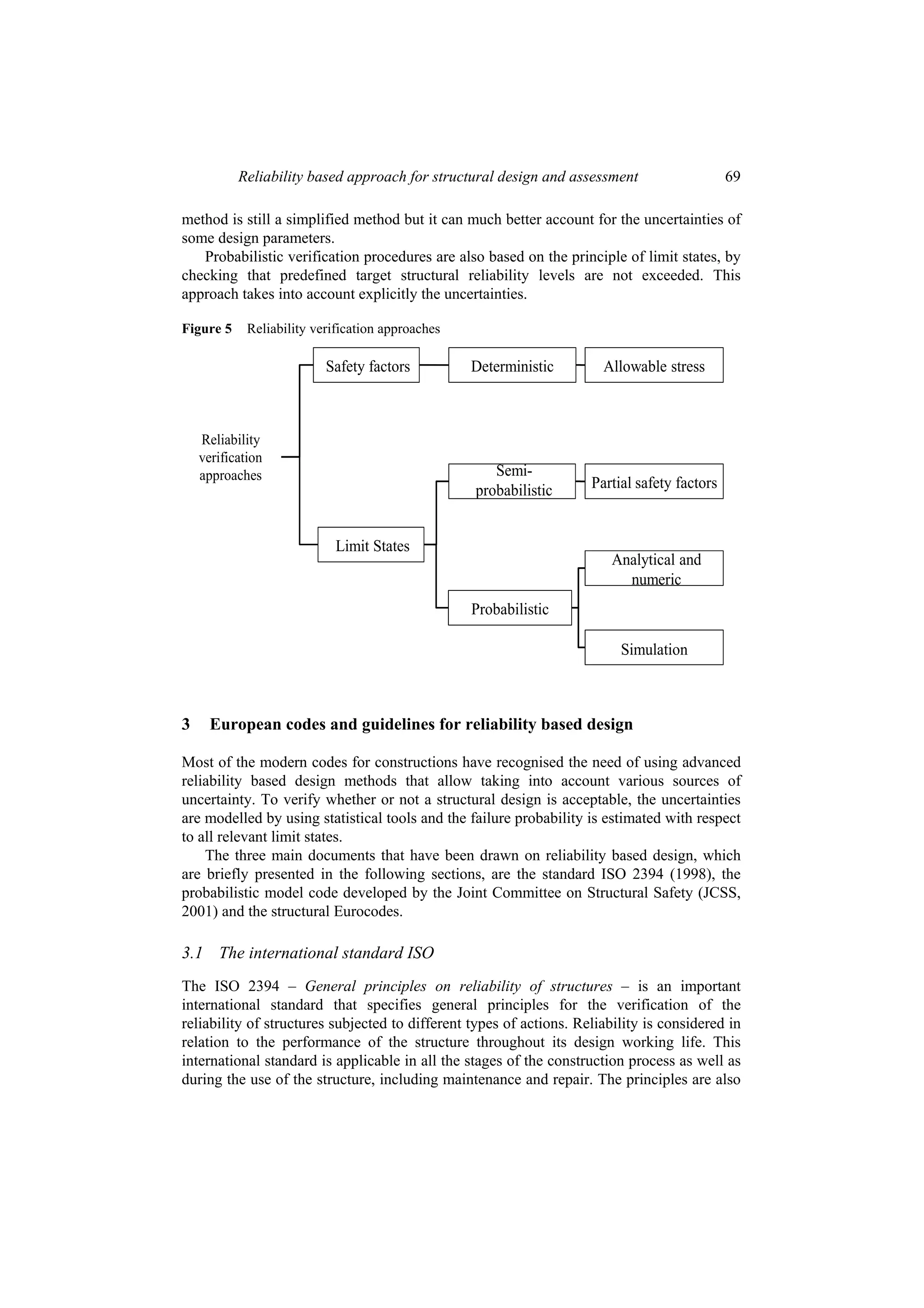
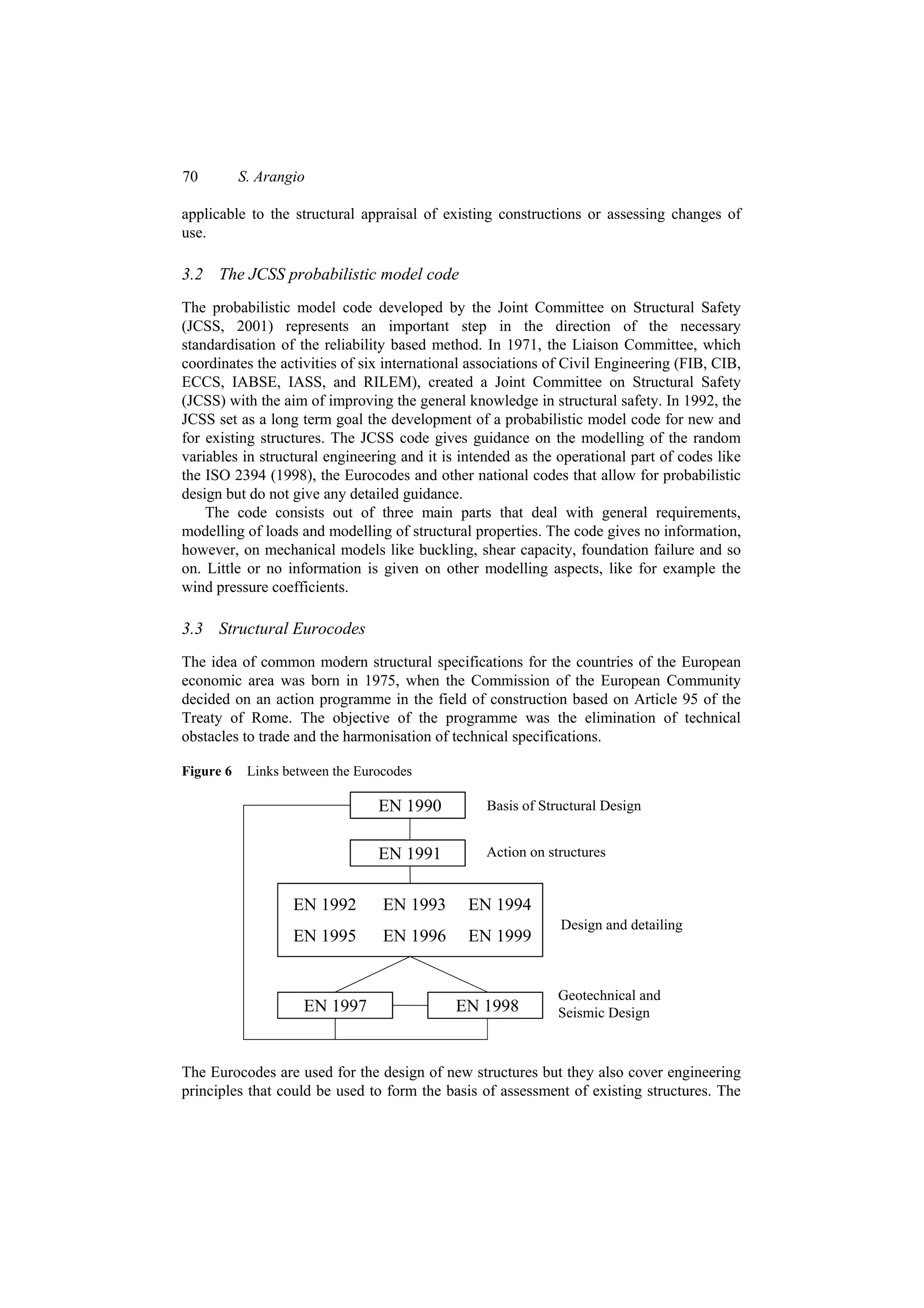
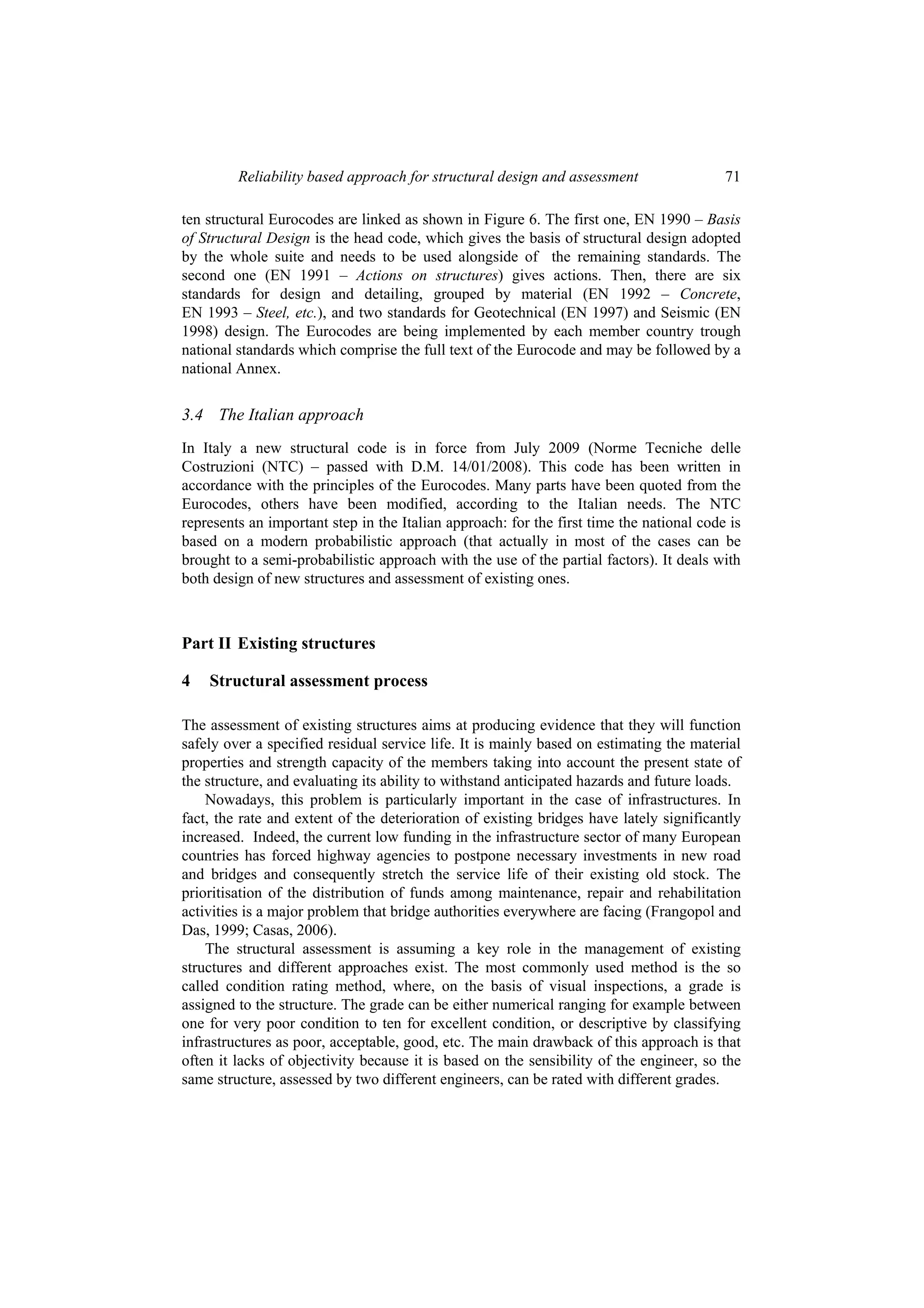
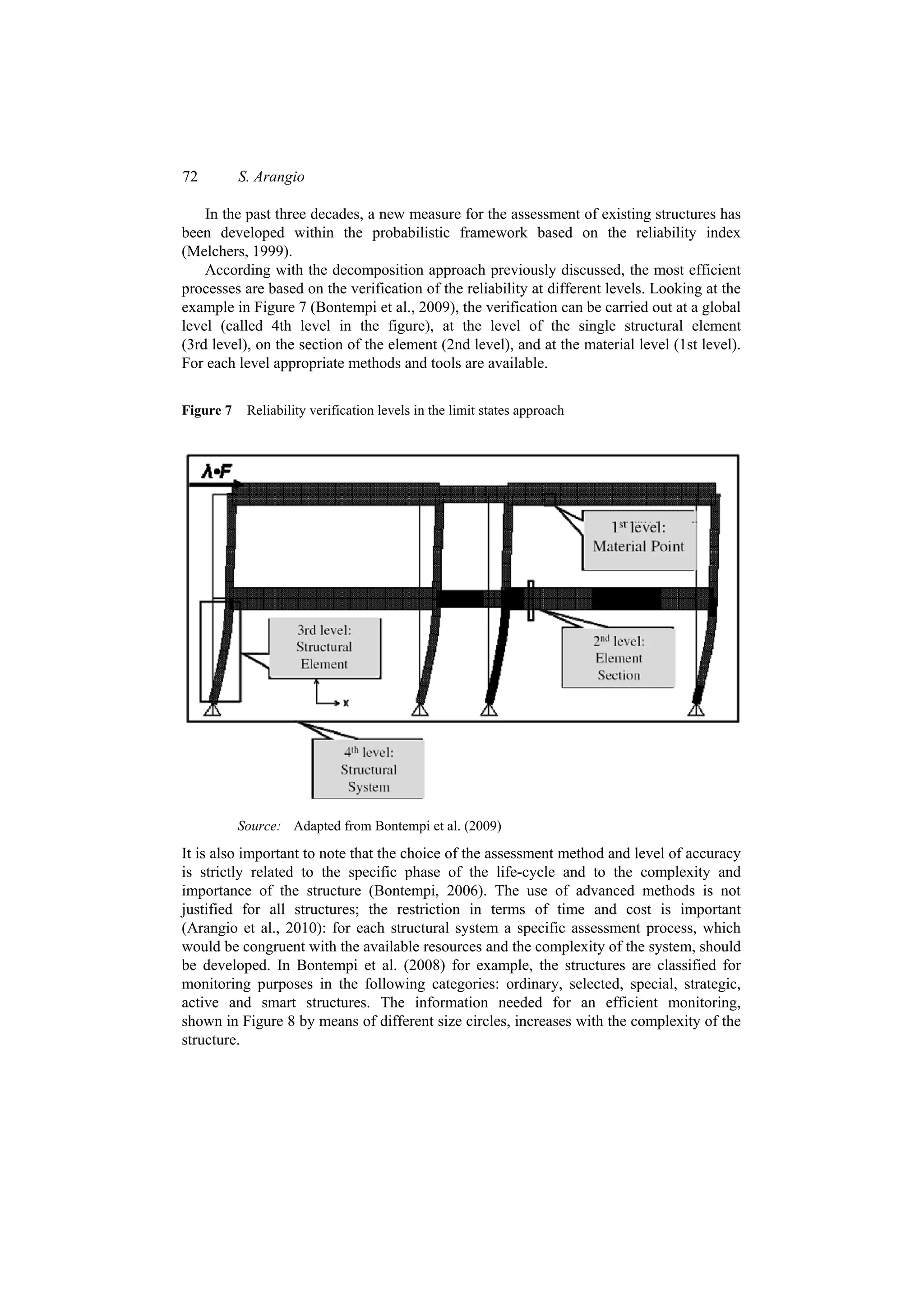
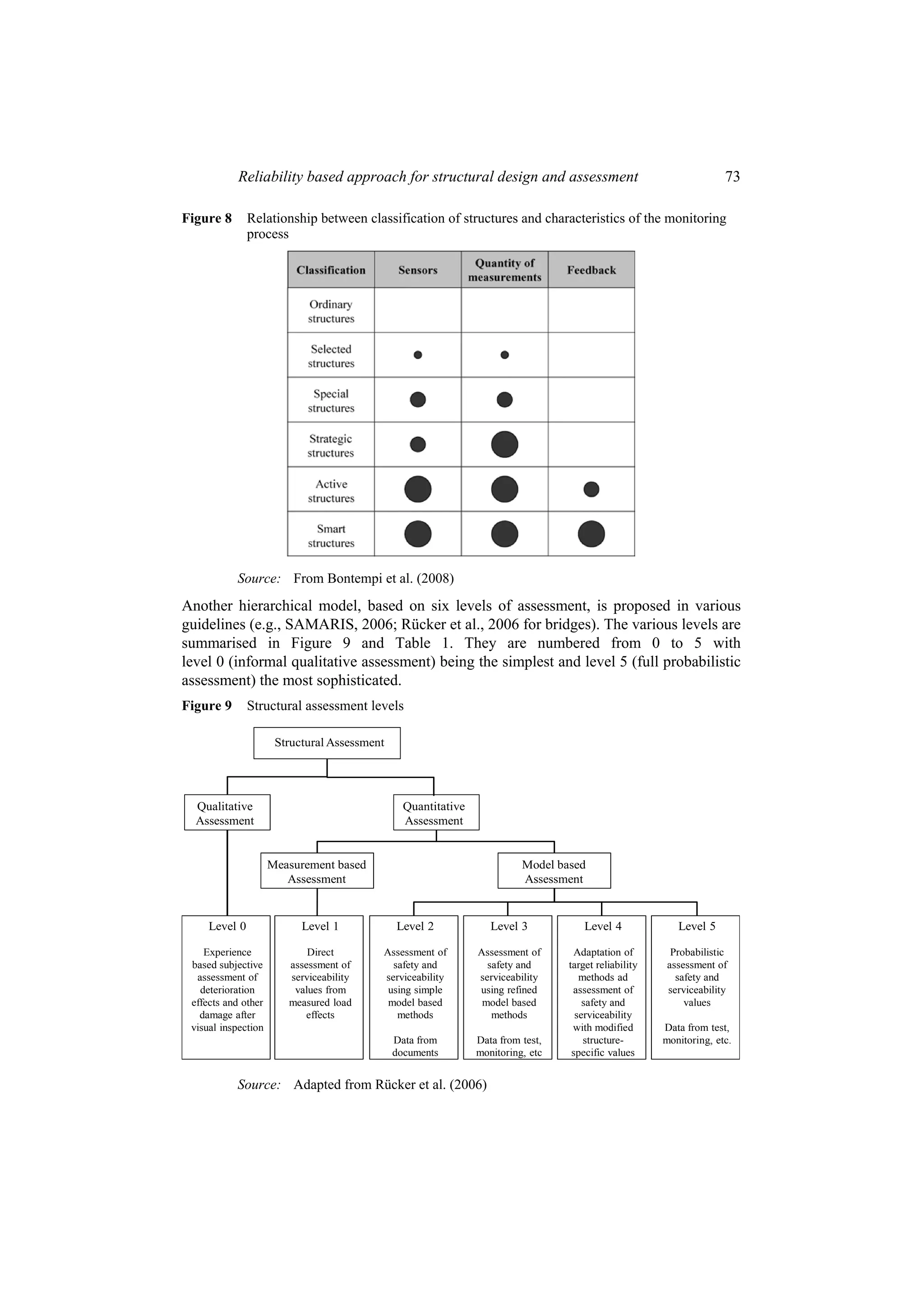
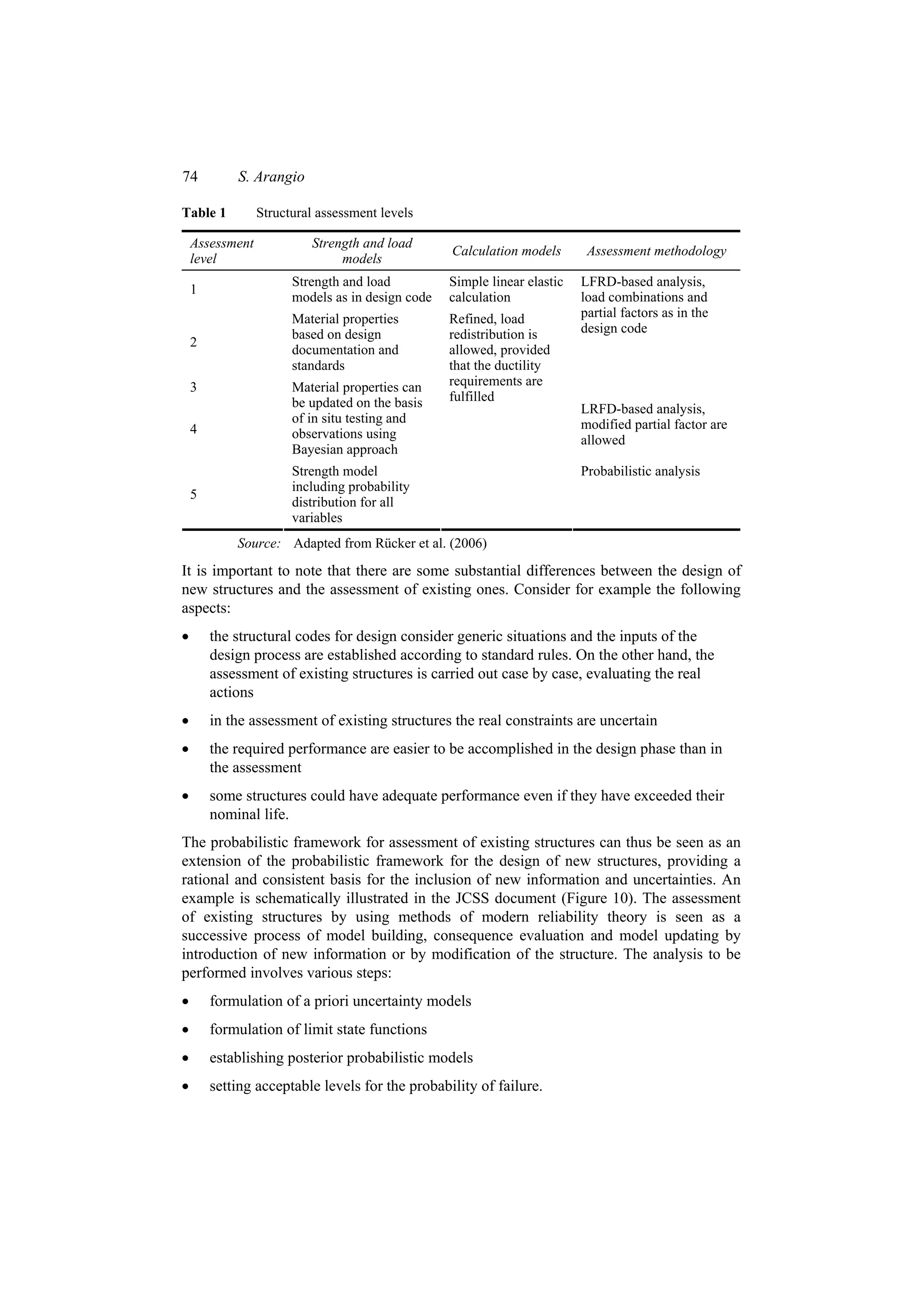
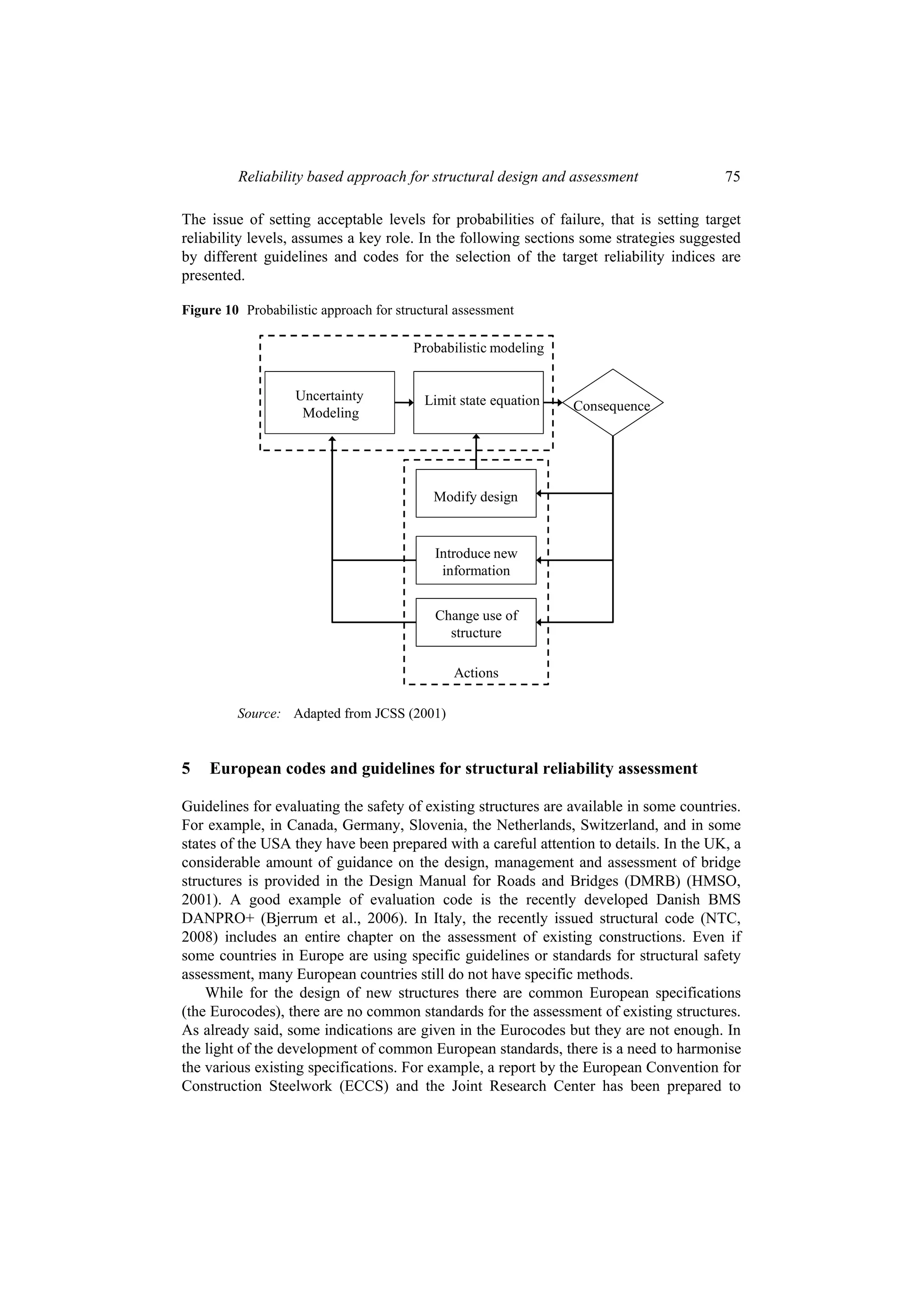
![76 S. Arangio
provide technical insight on the way existing steel structures could be assessed and the
remaining life could be estimated (Kühn et al., 2004). These recommendations follow the
principles of the Eurocodes.
It is important to note that, even if all the mentioned specifications provide a
philosophical basis and a theoretical framework for the assessment of structures, most of
them propose procedures based on deterministic approaches. There have been a number
of applications of reliability based assessment in some countries (Frangopol and Strauss,
2008) but the probabilistic approaches are not yet commonly used in practise, mainly due
to the lack of information and standardisation. A remarkable exception is presented for
example in the work by Biondini et al. (2004a). Some important documents that have
been drawn up in this sense are the standards ISO 2394 and 13822, and the JCSS
Probabilistic Code. Also various research projects [e.g., Rücker et al. (2006) and BRIME
(2003)] have proposed guidelines on monitoring and reliability-based assessment.
5.1 The international standard ISO
The already mentioned ISO 2394 – General Principles on Reliability of Structures, and
the ISO 13822 – Assessment of Existing Structures – deal with reliability assessment of
existing structures. The general principles for the verification of the reliability are
introduce in clause 10 of ISO 2394, where it is explained how the basic variables, such as
loads, material properties and model uncertainties, shall be taken. This approach allows
drawing conclusions with respect to the bearing capacity of single tested members, to the
capacity of other non-tested members and other load conditions as well as to the
behaviour of the entire system. The International Standard ISO 13822 provides general
requirements and procedures for the assessment of existing structures (buildings, bridges,
industrial structures, etc.) based on the principles of structural reliability and
consequences of failure. It is intended to serve as a basis for preparing national standards
or codes of practise in accordance with current engineering practise and the economic
conditions.
5.2 The JCSS probabilistic model code
An important step in the direction of the necessary standardisation of the reliability based
method is the probabilistic model code developed by the Joint Committee on Structural
Safety (JCSS, 2001). The JCSS document includes general guidelines on reassessment,
methodologies for reliability updating, acceptability and safety criteria, with examples
and case studies. This document was created because the classical code approaches were
often not suited to address questions such as the evaluation of the risk of structures, and
the choice of the adequate type of inspection. Thus, the document was created with the
following basic goals:
a to standardise methods and terminology
b to be operational for the consulting engineers
c to be generally applicable for various materials and various structural types
d to build the basis of future codes and standards.](https://image.slidesharecdn.com/stefaniaarangio-130114015548-phpapp02/75/Reliability-based-approach-for-structural-design-and-assessment-performance-criteria-and-indicators-in-current-European-codes-and-guidelines_Stefania-Arangio-13-2048.jpg)
